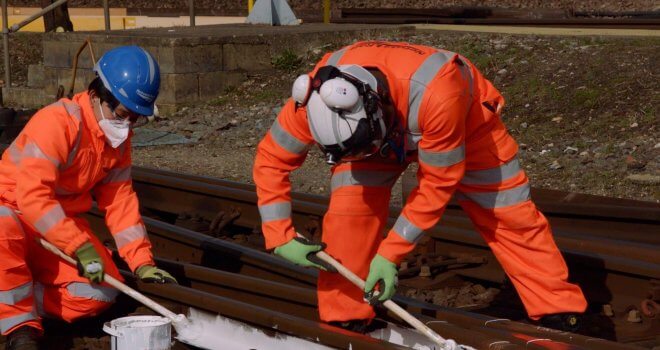How Companies Can Prevent Occupational Lung Disease

As an employer, it’s your duty to keep your employees safe at work. This involves protecting them against occupational health hazards such as unsafe noise levels or repetitive strain injuries.
Occupational lung disease is a common risk in many workplaces and unlike some occupation health problems it can be deadly. Respiratory dangers could include chemicals, dust, viruses or mold. Below are just a few ways in which you can protect your employees against developing lung disease through work.
Adopting protective equipment
Protective equipment is often only necessary in extreme cases where exposure to dangers cannot be prevented. For instance, firefighters or lab technicians working with toxic chemicals should be expected to have breathing apparatus at hand. More basic facemasks may be all that is needed when working with more general dust or mold.
Covid-19 is a recent example of a virus that was a workplace danger for many people. Some employees enforced that their employees wear facemasks, while for others it was optional. In most cases, it’s important to supply equipment even if you’re not enforcing that it be worn – this gives your employees the option to wear it and legally protects you.
Improving ventilation
Improving ventilation in work buildings can often help to reduce respiratory dangers. In factories and workshops, there should be extractor fans and purification systems in place to get rid of any harmful dust or fumes. Opening windows and doors can also help to allow a flow of fresh air through, although may not always be appropriate in some work environments.
Even in offices, ventilation can be important for reducing levels of dust in the air, as well as helping to prevent problems like mold. A decent office HVAC system will be able to provide ventilation (just make sure that this is serviced annually). This is often necessary in office buildings that may not have much natural ventilation due to sealed windows and heavy insulation.
Removing hazardous substances
There are many cases where occupational lung disease can be prevented by removing potentially hazardous substances. A lot of manufacturing companies have reduced the risk of occupational lung disease by switching to different chemicals and ingredients. This is sometimes necessary for improving workplace health conditions and reducing overall pollution.
If alternative substances cannot be used, it’s worth considering whether there are ways of filtering these substances out. For instance, some machines now have special filtration systems for safely eliminating dust or toxic fumes. Sometimes, the presence of substances such as mould can cause damage not only to the respiratory system but also to the building structure as well, making it important to act quickly. In such cases, seeking mould remediation San Antonio services or similar professionals nearby can help prevent long-term structural damage while also ensuring a healthier environment for employees.
In old office buildings, there may also be hazardous substances to look out for such as asbestos and lead. These materials were commonly used in the construction of old buildings and can produce toxic dust that can be breathed in, resulting in lung problems – although these materials are generally safe unless disturbed, the safest option is often to remove them entirely. There are companies that can check your workplace for these substances.




